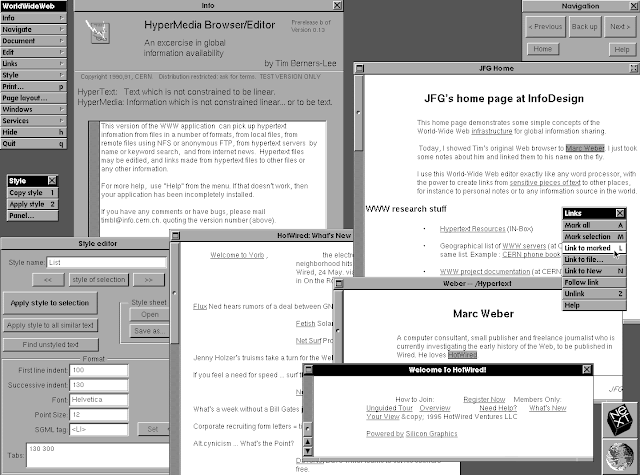Where It All Began...
I was reading this month's Wired Magazine - I do like to get the paper editions of stuff, despite its ready and immediate availability online: I'm one of those who predict the self-immolation of the digital realm in the not-too-distant, after all, so let's keep print alive for as long as possible - and came across an article by Tim Carmody: "The Fabric of Reality", about HTML - HyperText Markup Language: the stuff that powers the face of the web experience, and something of which I would hazard that 99% of internet users are blithely unaware. Whilst the interactive functionality we take for granted on the internet these days is largely built on client-side Javascript and back-end server-side code written in a variety of higher-level languages, it is HTML that largely gives form to what you see and interact with when consuming your daily fix of click-bait tripe.
The fact that I'm able to write this humble daily screed is down to so-called Web 2.0, when interactivity was truly brought to life on the web: not only could you follow preprogrammed links between 'articles' and websites by clicking on the 'hyperlinks', as in Web 1.0, you could actually interact with the software running the servers that fed the web pages out to you, dynamically. Most people consume content passively, but their interactions with the content they consume is anything but: every time you sign up for something, buy something, play a game - practically anything you might do, day to day, social media being the obvious exemplar - you are interacting with back-end computer systems on a fairly sophisticated level. Not so with Web 1.0, Tim Berners-Lee's world-changing invention, coded in 1990 and subsequently unleashed on the then rarified playground of The Internet - it would have been capitalised in those days - revealing a level of potential accessibility to information then unheard of.
The fact that there was no way of actually searching for anything you didn't know the exact location of was no deterrent, as there were only a relative handful of actual websites out in the wild for the first few years of the web's existence. Its growth was slow to start with, but enthusiasts, academics and scientists - and quite a few mavericks who could see the disruptive potential of it - jumped enthusiastically on board. Once it took off, it really took off, and with the advent of Web 2.0, accessibility and interactivity now firmly embedded in the system and guided by the incoming Web Standards and the end of the competing proprietary standards of the early period: no two web browsers worked alike for some years, and it was relative chaos, with sites that functioned on one system breaking miserably on others.
With the general adoption of agreed industry standards, though, came commerce and the monetisation of the web, with Amazon and eBay, et al, finding innumerable and increasingly clever ways of extracting vast amounts of cash from humble HTML- driven interactions; and once Apple had effectively blown the lid off of Pandora's Box for good with the iPhone, the era of the business- led internet began for real, leaving so many of the original intentions behind the web lying in the dust in its wake.
For many of us very early adopters - at a time before most people knew anything about computers, didn't own a mobile phone - in those days, they were just plain, dumb phones - and well before the era of broadband; we have a kind of nostalgia for both the innocence and the subversive nature of the web of the early days: you could do so much with so little, but it was yours: it was your playground. Unfortunately, that playground has been turned into a battlefield by the vested interests who are now the oligarchs of the virtual space that was once ours to roam. I've got an urge to write a completely un-dynamic website in early HTML: you never know...




Comments
Post a Comment